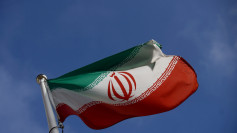The U.S. economy contracted massively in the first quarter and will again contract massively in the second, meaning the economy as a whole is now in recession.
The National Association for Business Economics (NABE) expects the U.S. GDP to contract by 26.5% in the second quarter after a 2.4% drop in Q1. A panel of 45 economists convened by NABE expects growth to turn positive in Q3, with GDP rising by 2% and by 5.8% in Q4. NABE is the world's largest international association of applied economists, strategists, academics, and policy-makers committed to the application of economics.
It confirms the U.S. economy is already in a deep recession. It said even with the jaw-dropping jump in unemployment to 17 million over three weeks, American consumers are expected to continue spending. This prediction raises hopes the recession will end this year.
"NABE Outlook Survey panelists believe that the U.S. economy is already in recession and will remain in a contractionary state for the first half of 2020, as the COVID-19 pandemic severely restricts economic activity," said NABE President Constance Hunter, CBE, who's also chief economist at KPMG.
NABE said the weak labor market will result in a drag on consumer spending, but the economists do not expect personal consumption expenditures to turn negative, since consumers will continue to buy necessary items.
NABE economists also expect an average 1.0% annual growth in personal consumption expenditures over the last three quarters of 2020, increasing to a quarterly average of 1.6% growth in 2021. Q2 should see consumer spending grow by 0.8%, the slowest pace this year.
They also expect the unemployment rate to balloon to 12% in Q2. By the end of the year, the unemployment rate is expected to drop to 9.5%, and to 6% by the end of 2021.
In March, the unemployment rate was 4.4%. On the other hand, the real unemployment rate stood at 8.7%. This number includes the underemployed and marginally attached. It also contains 514,000 discouraged workers, or Americans that have given up looking for work but would take a job if it were offered.
"The panel is optimistic about a return to economic growth in the latter half of 2020, anticipating an annualized real GDP growth rate of 2.0% in the third quarter," said Hunter. "Despite a sharp deterioration in labor market conditions, the median forecast suggests conditions will improve by the end of the year with support from aggressive fiscal and monetary stimulus, as panelists expect the Federal Reserve to hold steady on near-zero interest rates through 2021."
NABE economists expect 4.58 million job losses in April. Other economists increased their forecasts for job losses to more than double that after Thursday's claims report showed another 6.6 million filing for unemployment. For example, JPMorgan expects 25 million lost jobs.
On the other hand, the Federal Reserve Bank of St. Louis forecasts unemployment might spike to 30% during the pandemic. This will be far worse than the Great Depression and any recession afterward.






